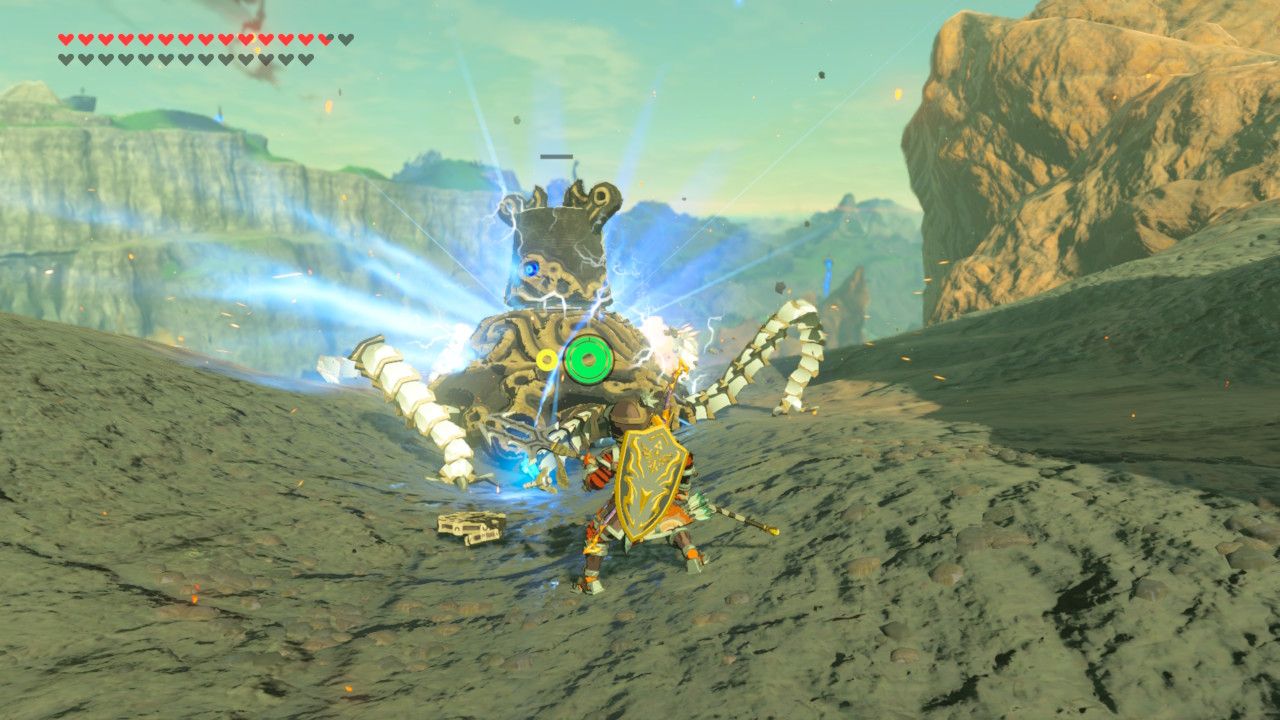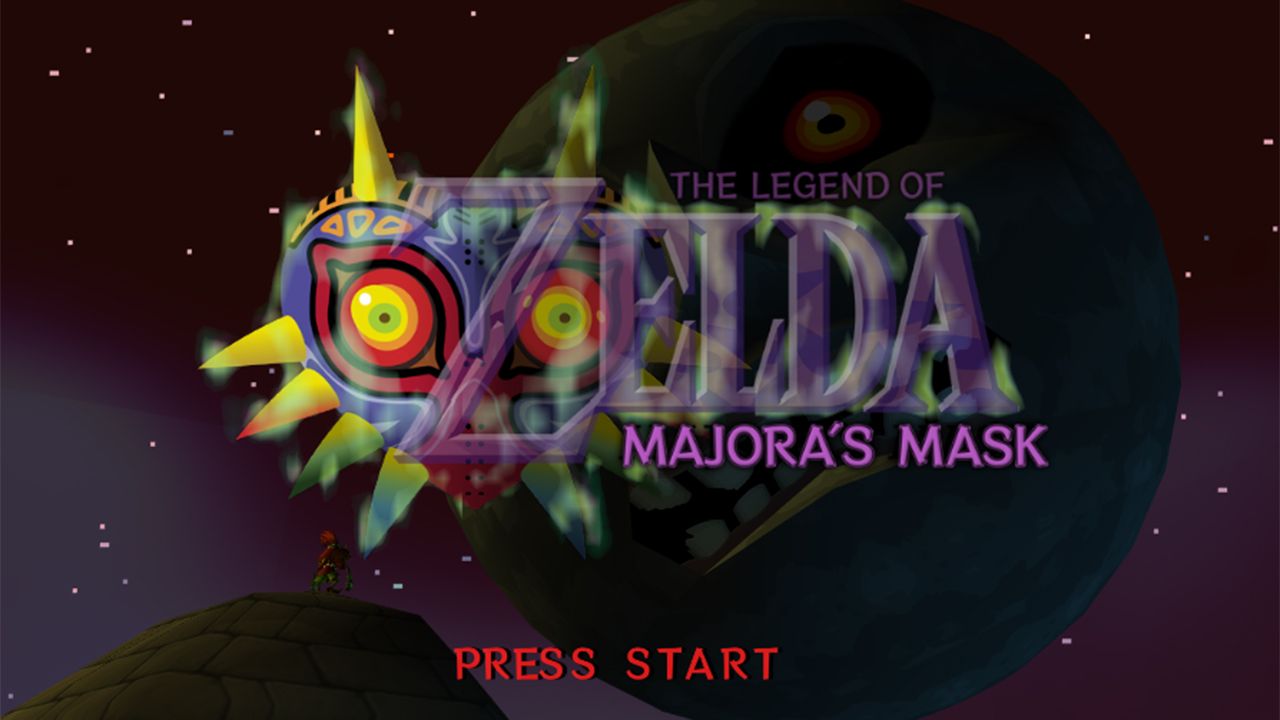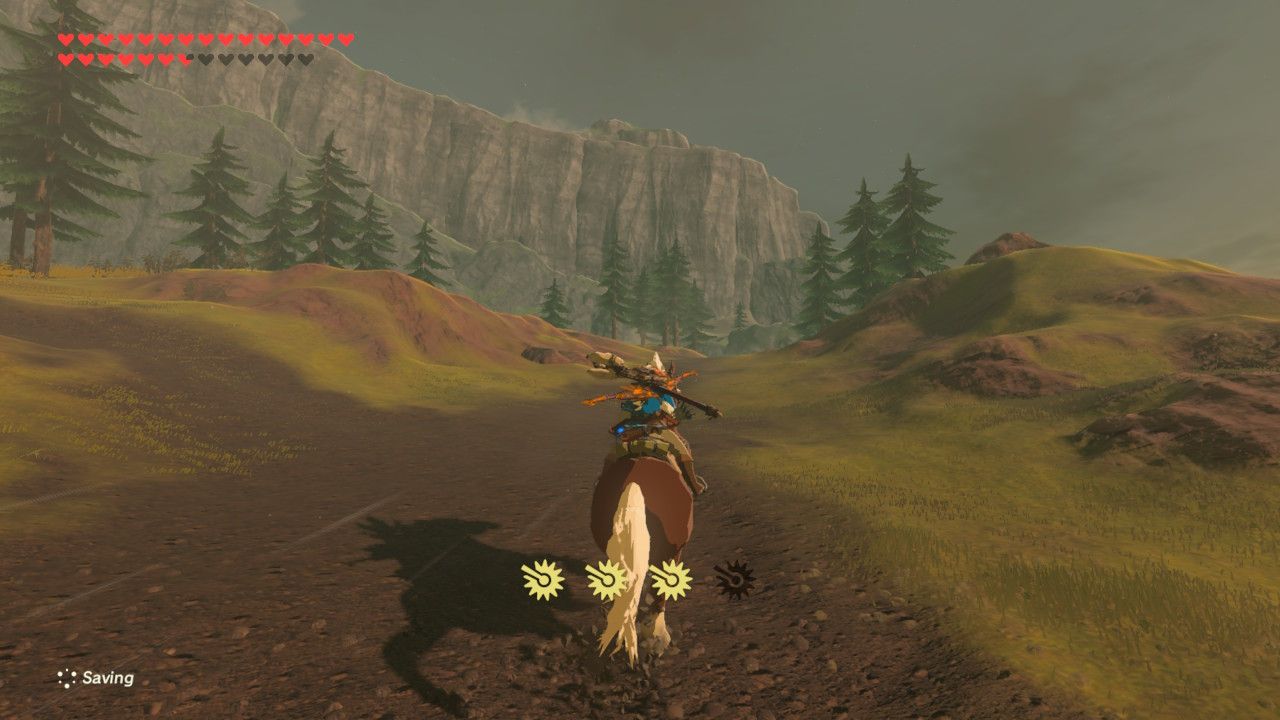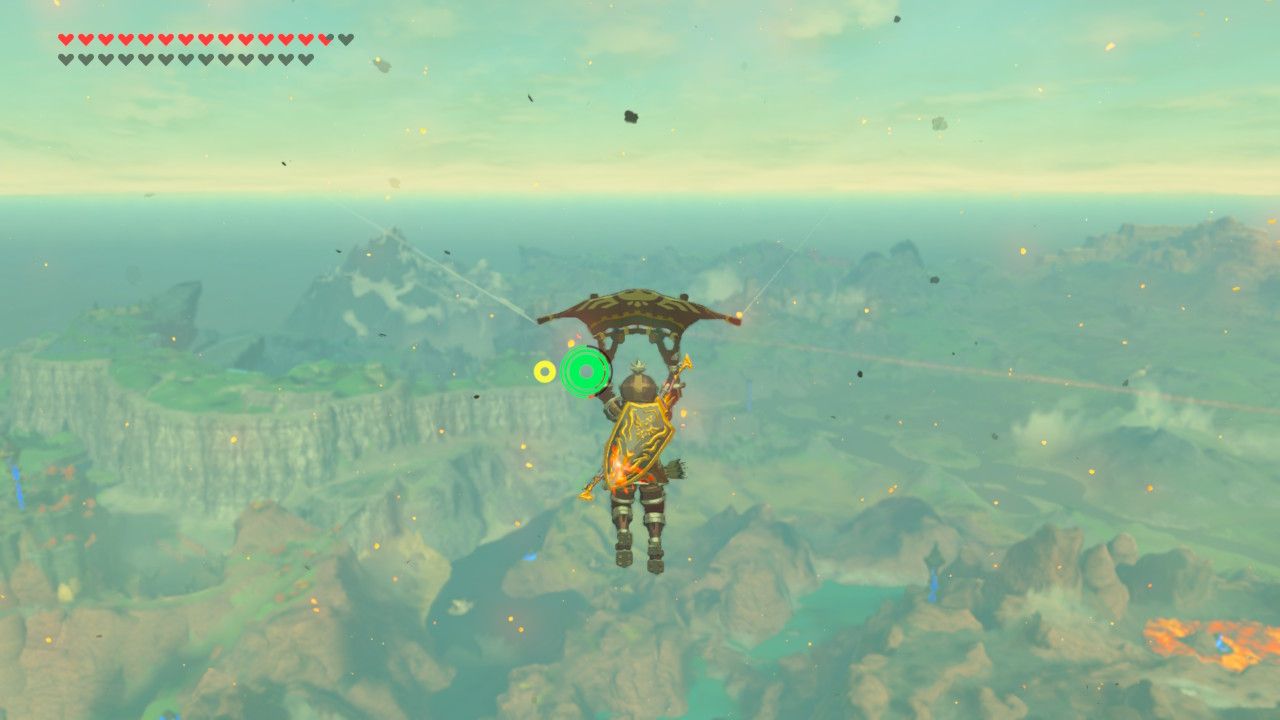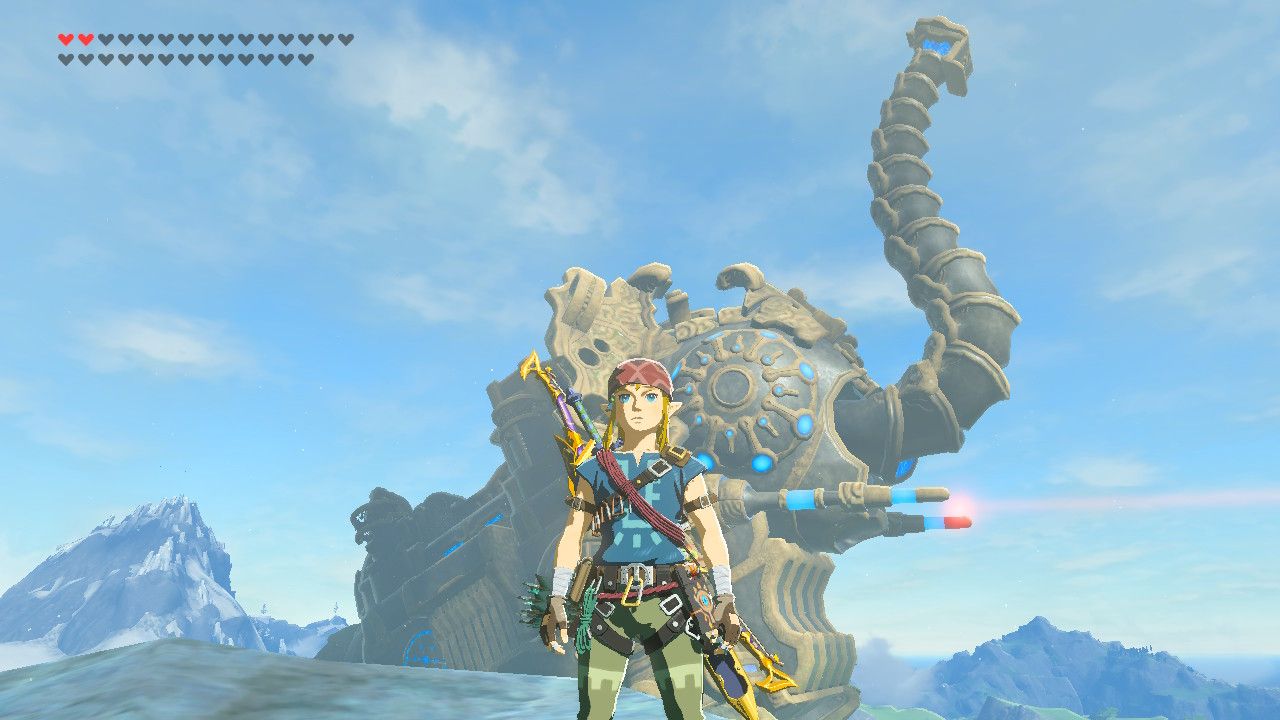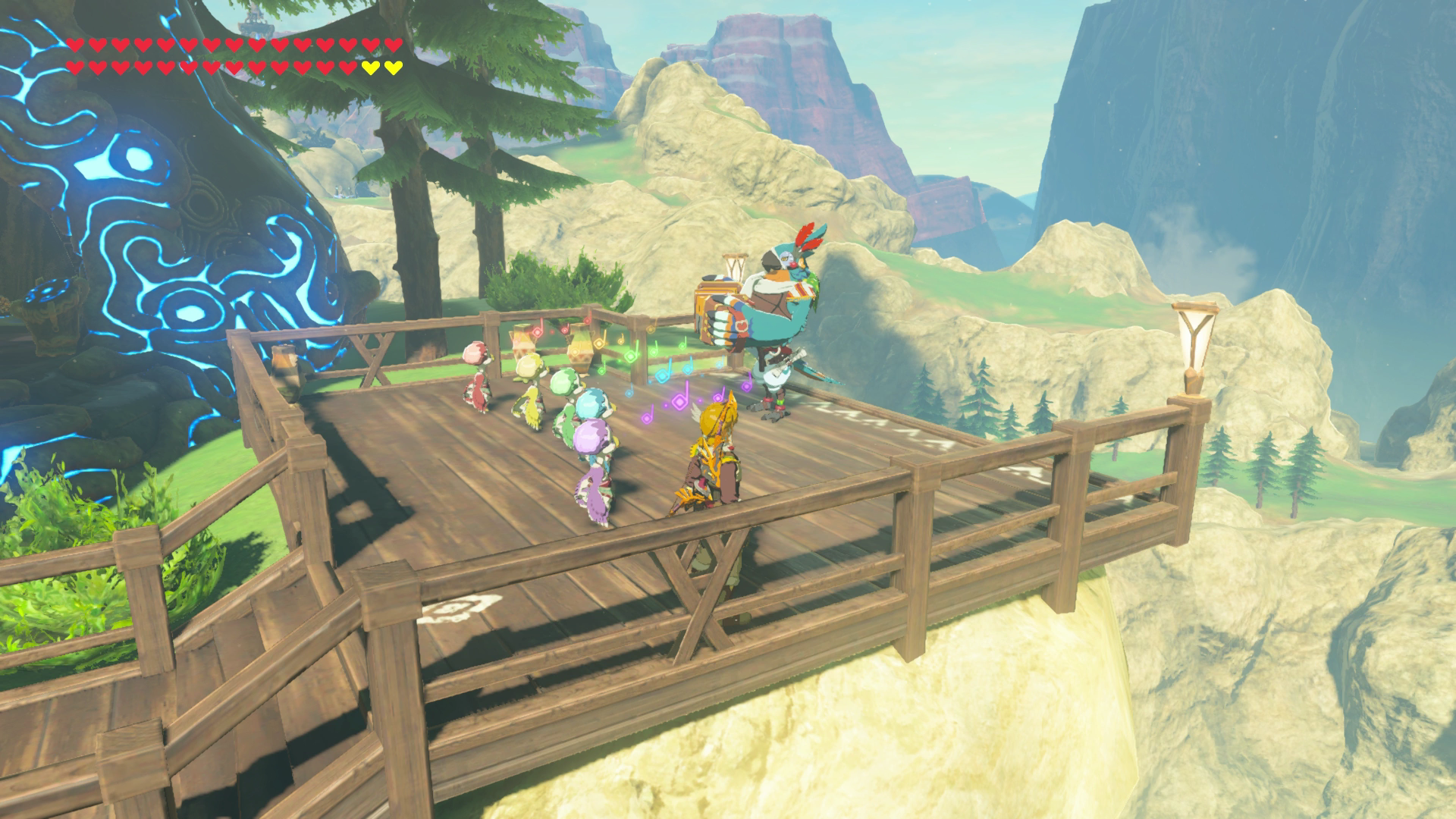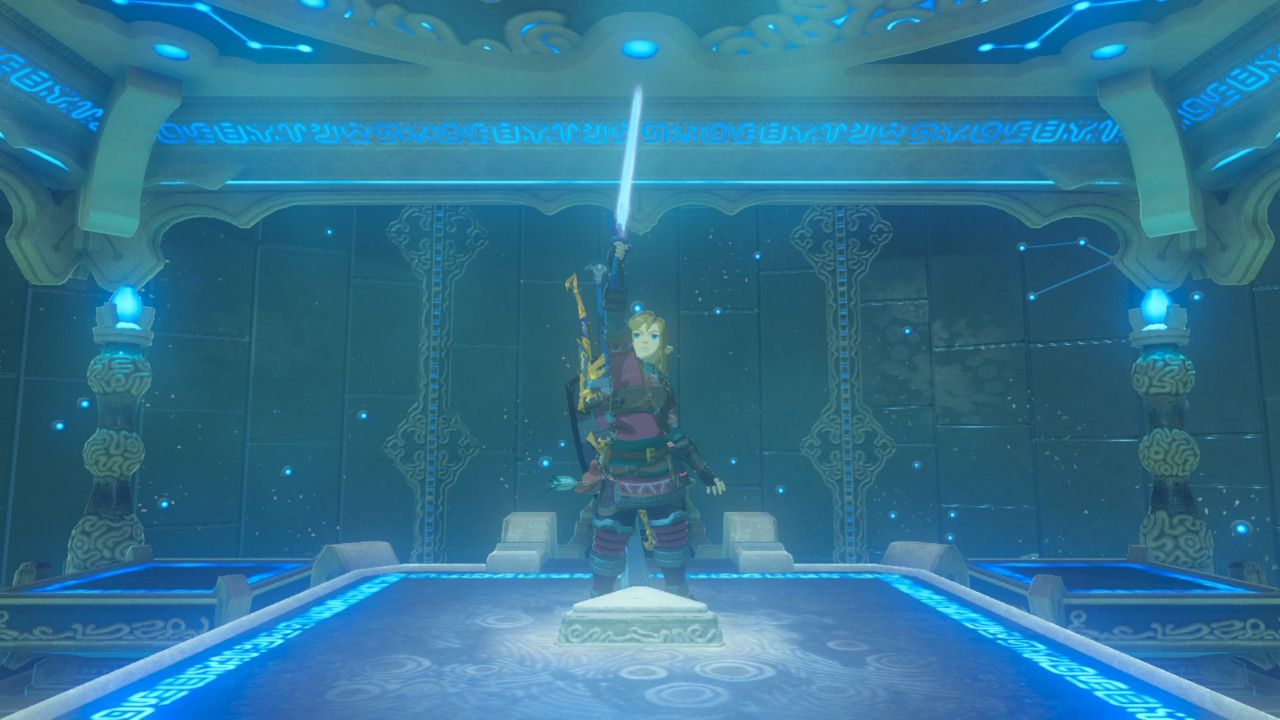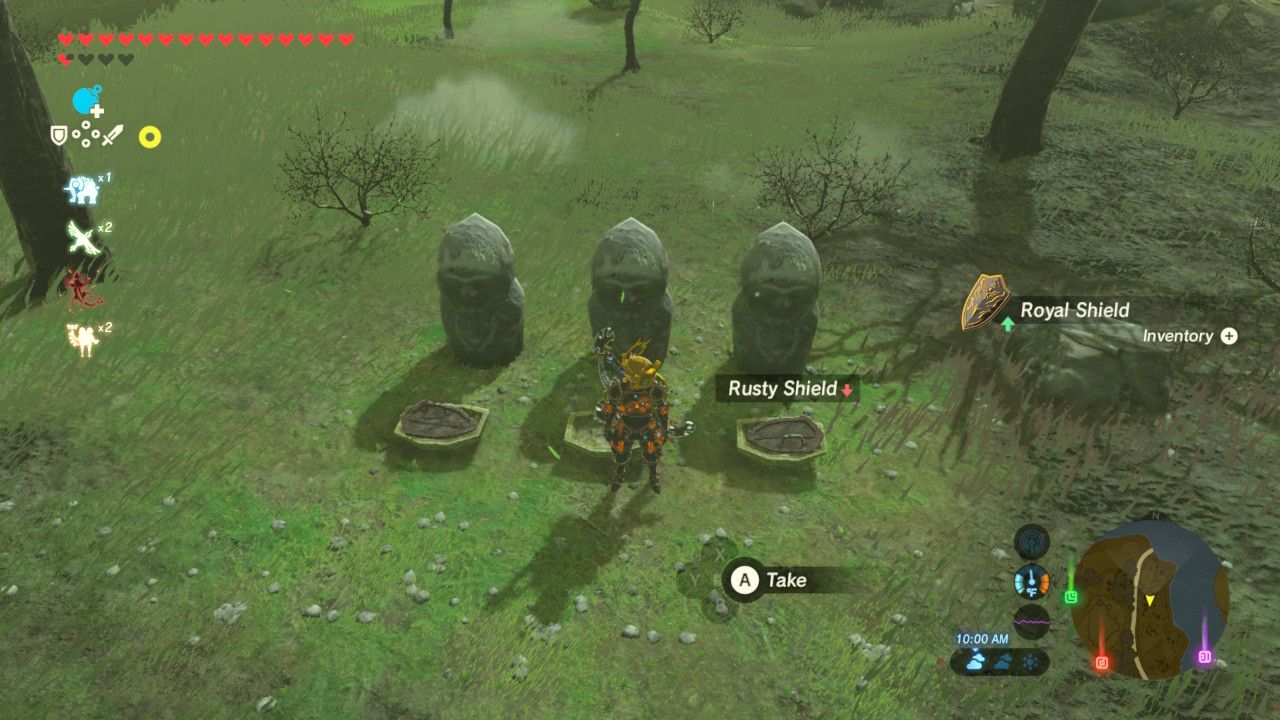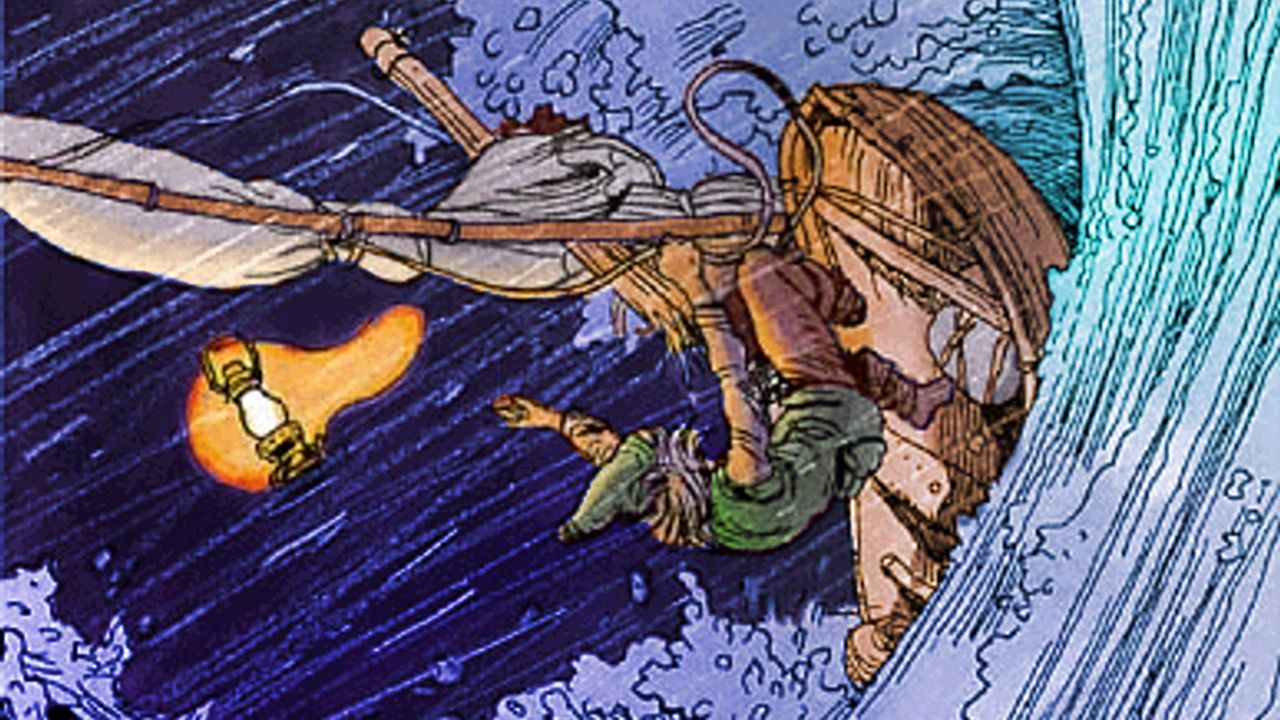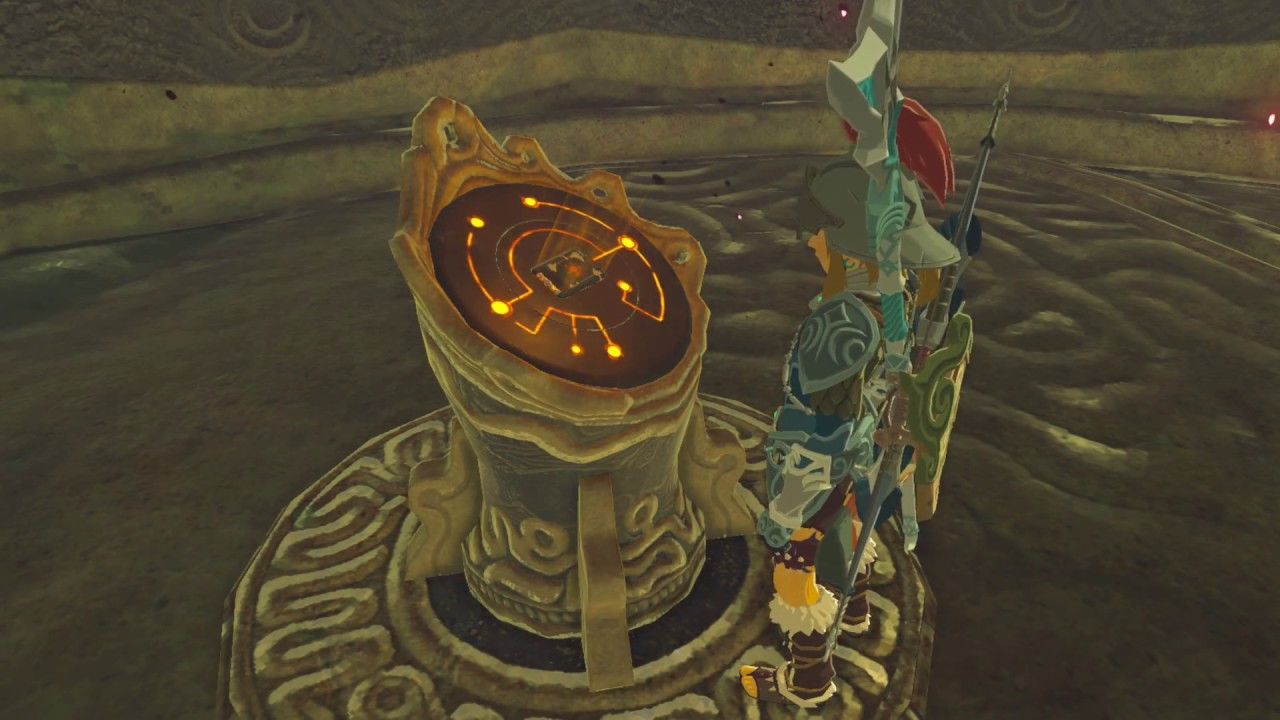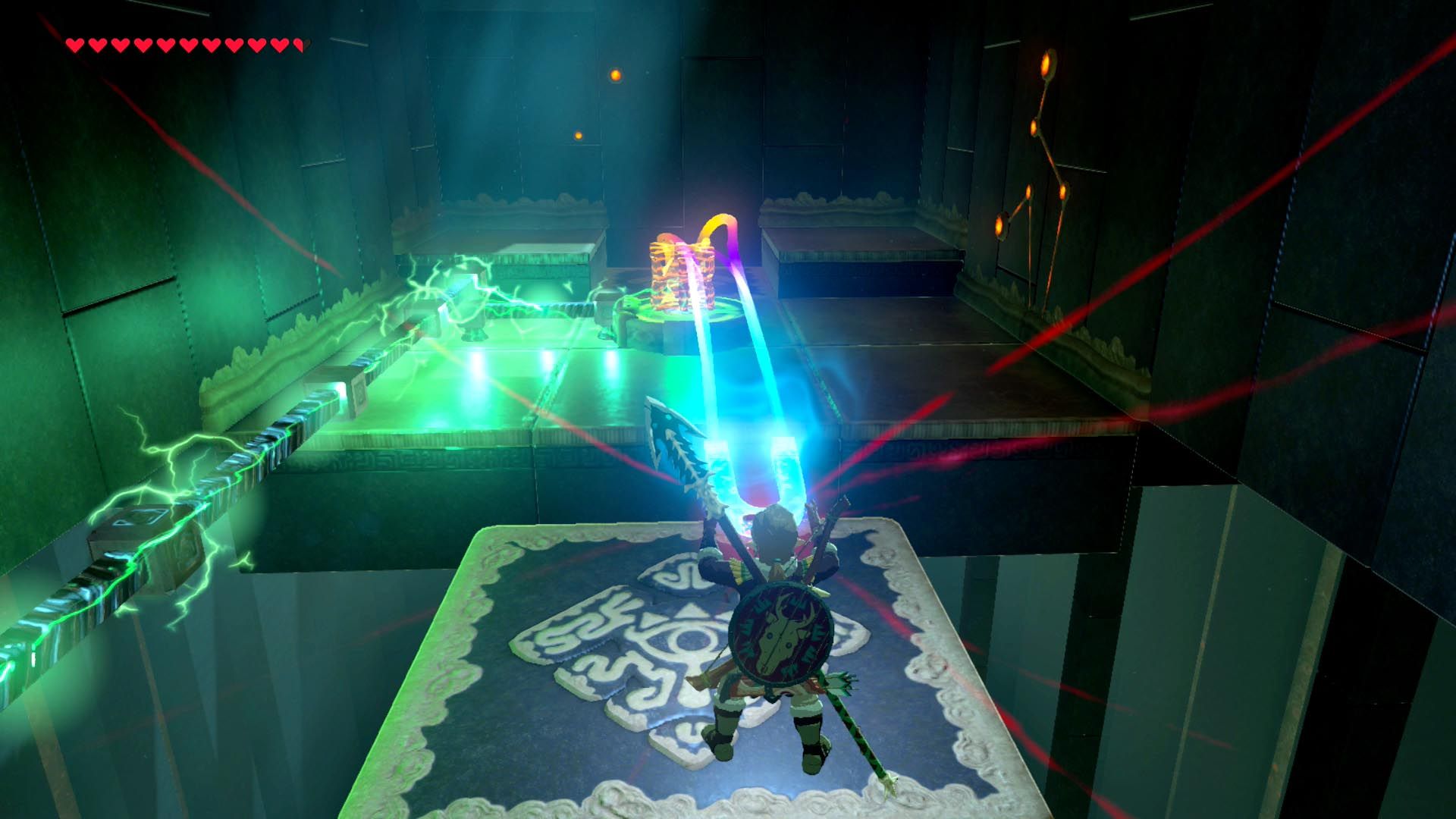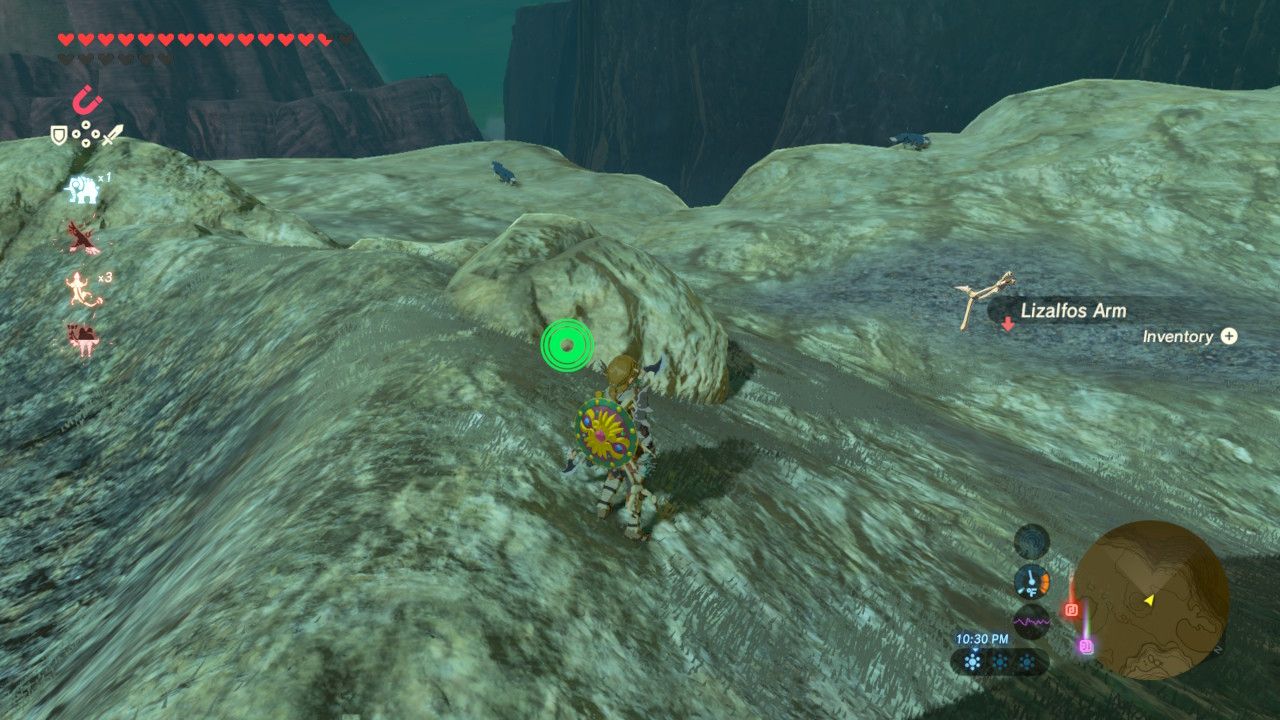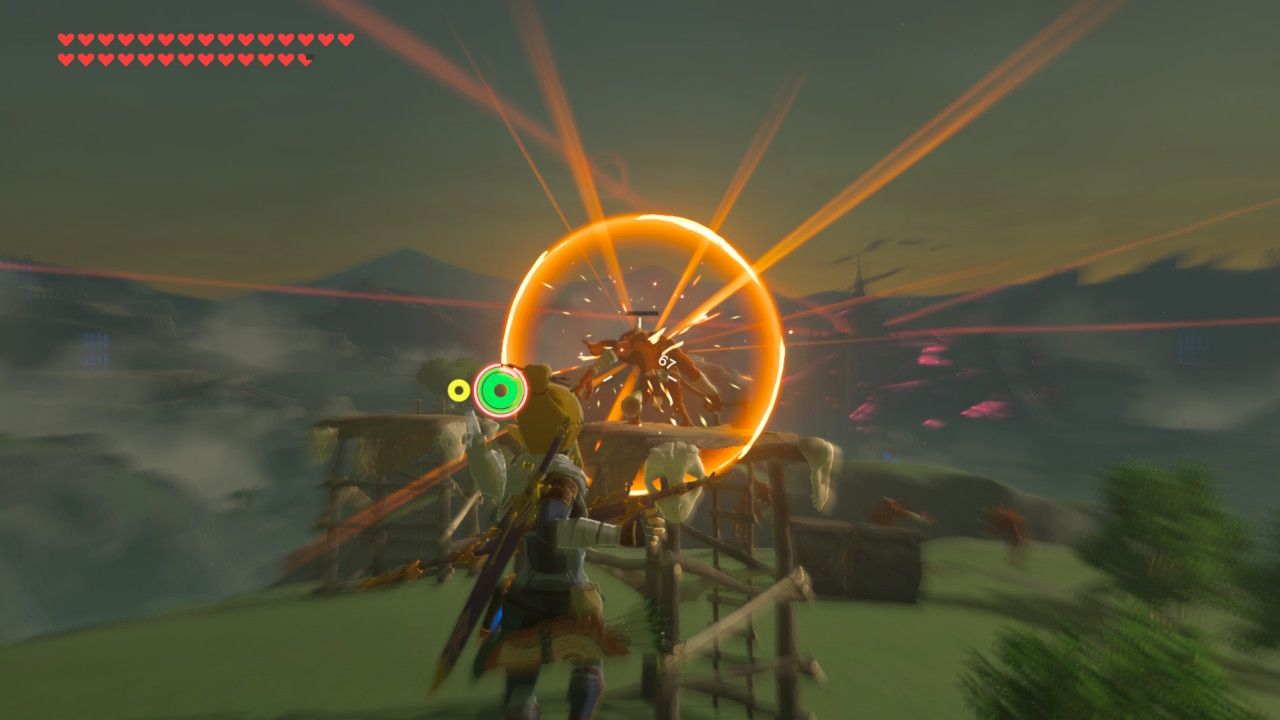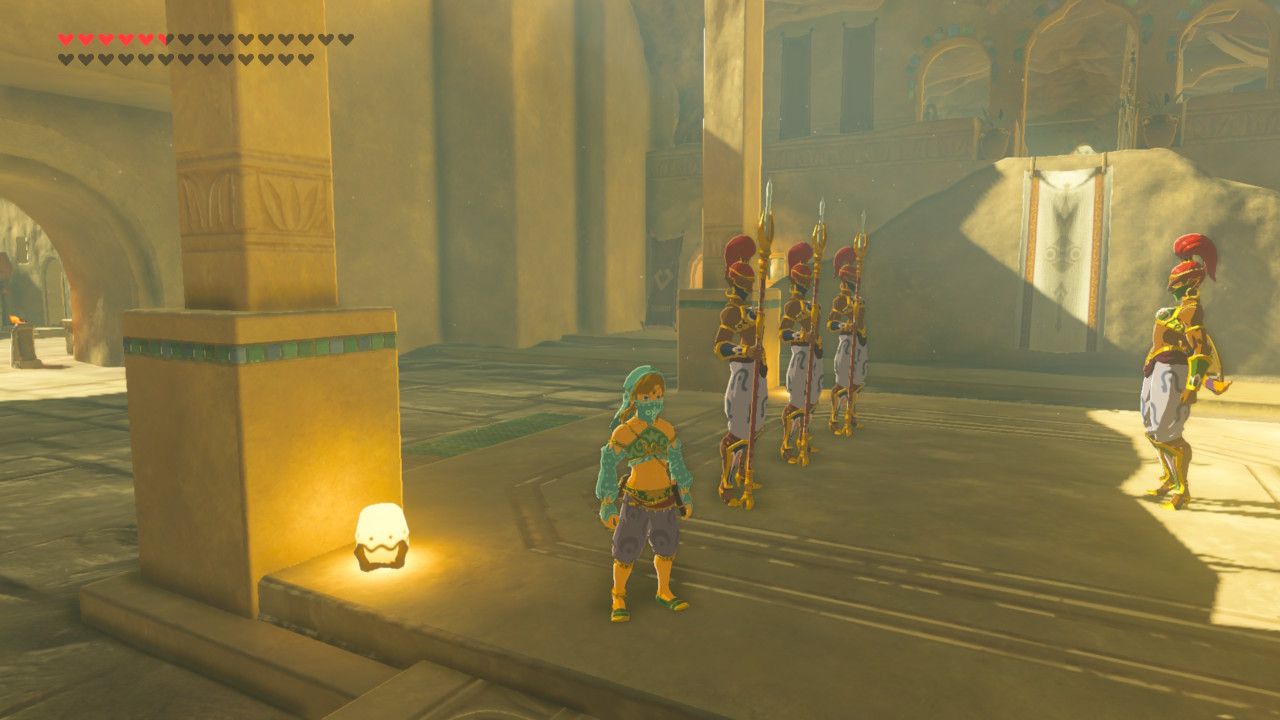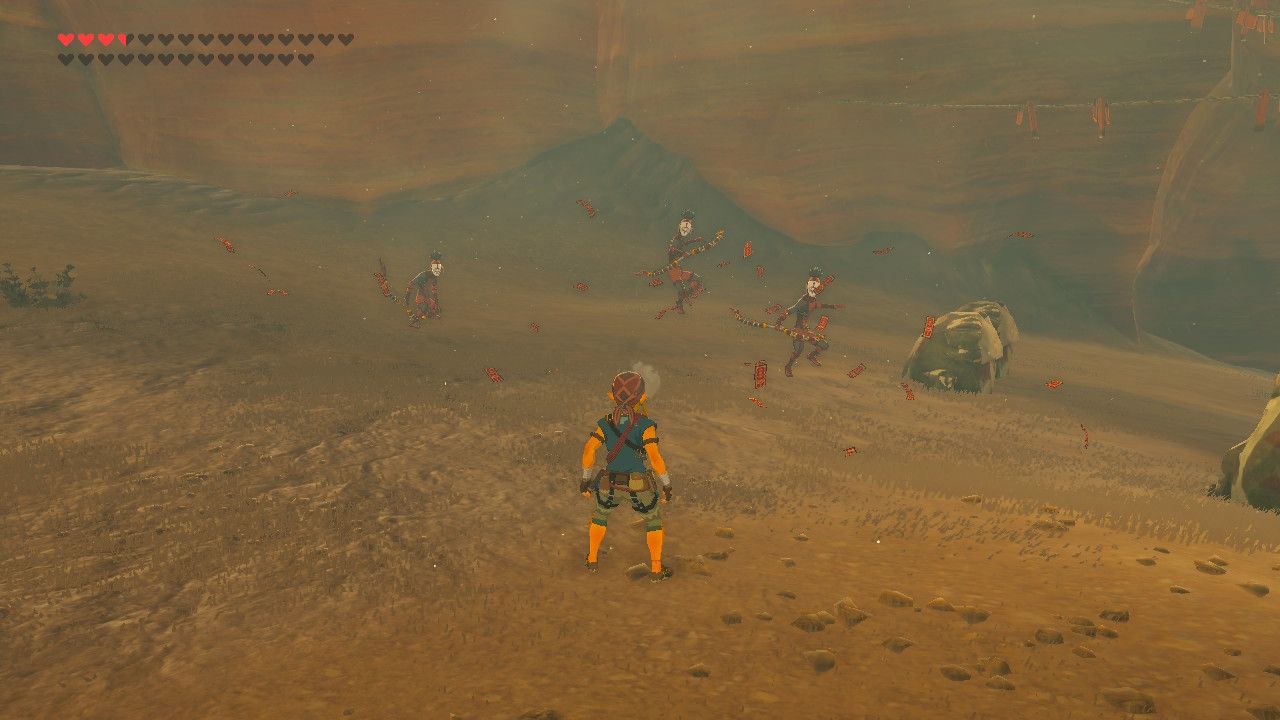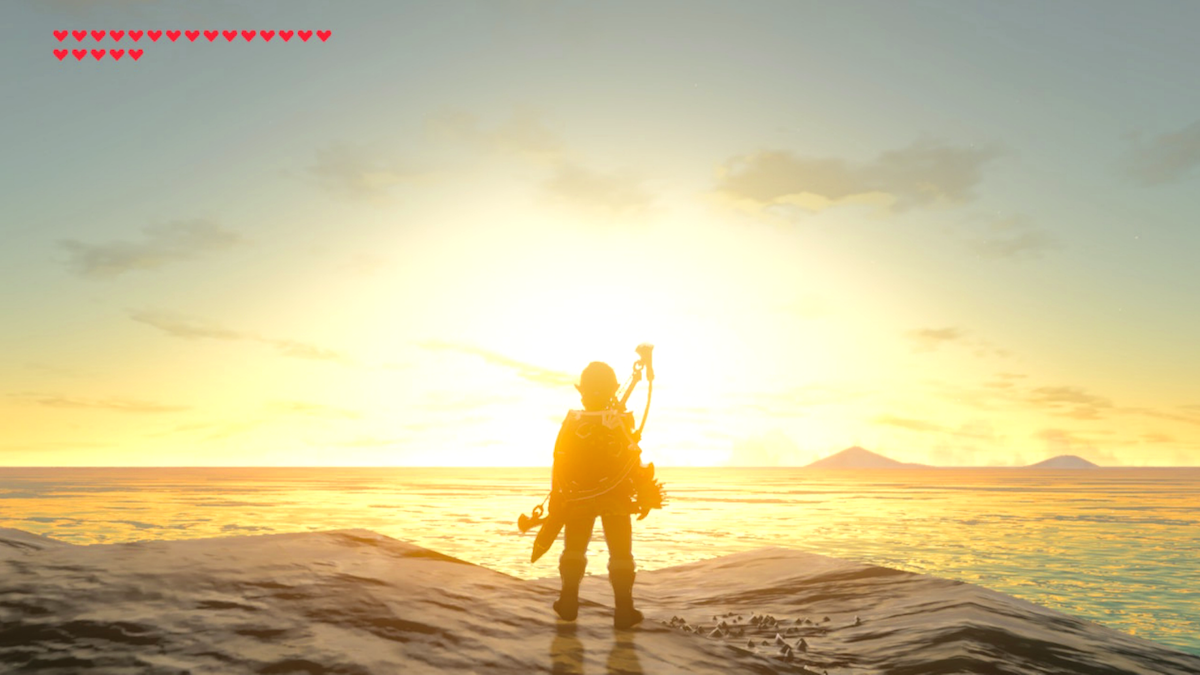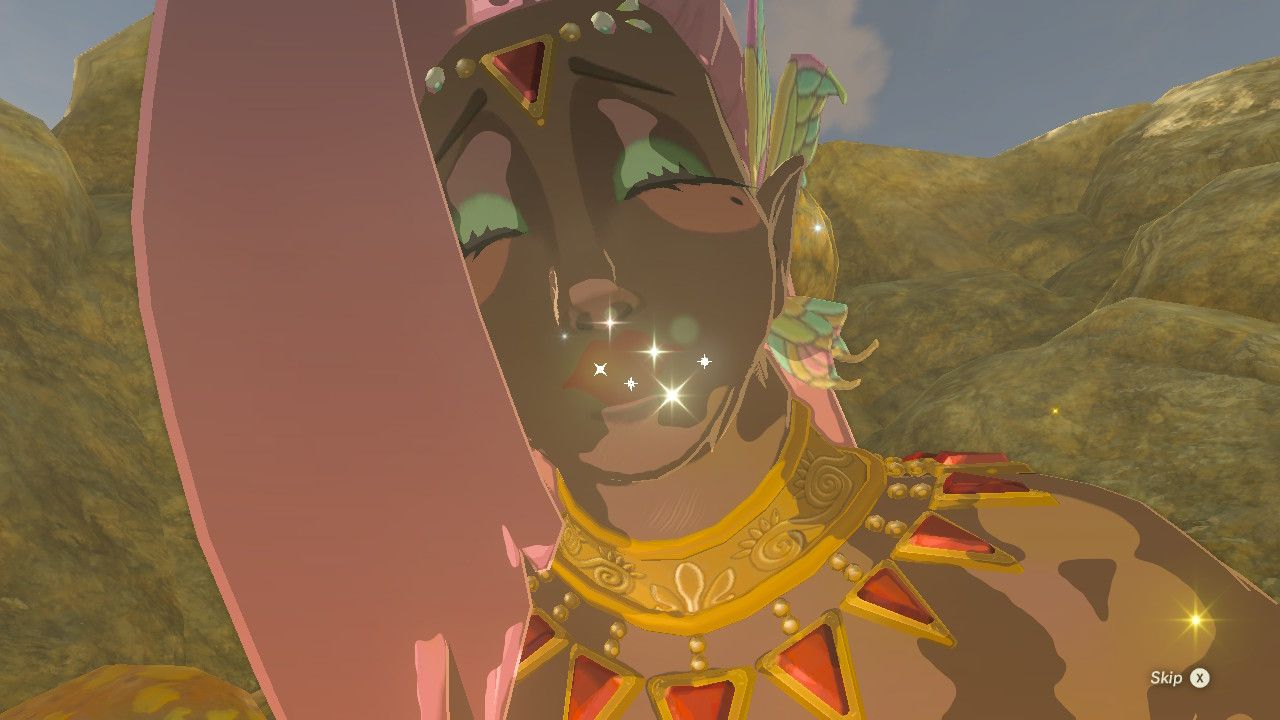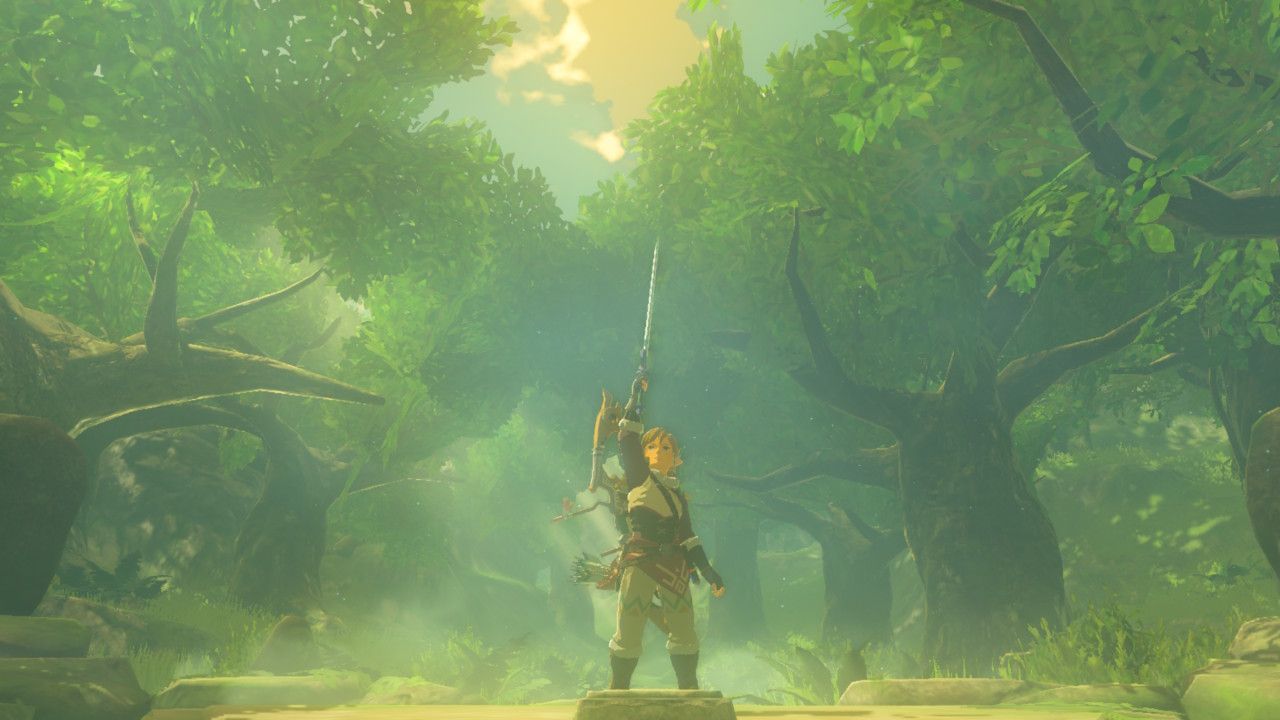This is Dreaming of… a monthly feature that digs deep into unannounced (or barely announced) games, and with some research and a bit of guesswork, dreams up what that game might be like when it’s actually released.
A year ago to this day, The Legend of Zelda: Breath of the Wild was released alongside the Nintendo Switch. Both have seen massive success, with the Switch itself having sold nearly fifteen million units and Breath of the Wild selling over eight million copies between the Switch and Wii U. More than that, Breath of the Wild has been a critical powerhouse, raking in dozens of Game of the Year awards from the likes of The Game Awards, The D.I.C.E. Awards and many more. It’s an undeniable home run for Nintendo, but knowing the Big N, the next Zelda game could be anything: it could be ultra-similar to Breath of the Wild or it could take an extreme detour and surprise everybody. Dreaming of what the next Legend of Zelda could be is a grand exercise for the imagination, and we’re excited to give it a go.
We do have a little bit of information to go off of concerning the next game in the long-running franchise. Series producer Eiji Aonuma has confirmed that the next Zelda is definitely in production. This seems like a given, but the team that made Breath of the Wild has also been working hard on its two major chunks of DLC: The Master Trials and The Champions’ Ballad, so it’s easy to imagine them having postponed work on the sequel until they had finished production on this DLC. However, Breath of the Wild director Hidemaro Fujibayashi has stated that they’ve been kicking around ideas for this follow up, trying to decide if they want to make a direct sequel or something completely different. Aonuma has also gone on record speaking about how the level of freedom present in Breath of the Wild is something he wants to maintain in the series going forward. No, it’s not a lot of information about the next Zelda game, but it’s a start.
Looking for Inspiration
Without a major source of hard evidence to go off of, looking back on Zelda’s long history is a decent way to plot a plausible trajectory of its future – or at least it might be, considering the seemingly random twists and turns that the franchise has taken over a thirty-year period. About half of all Nintendo consoles have had two Zelda titles grace their circuit boards: the NES had The Legend of Zelda and Zelda II: The Adventure of Link, the N64 had The Ocarina of Time and Majora’s Mask, the GameCube and Wii cheated a bit, as the GameCube had The Wind Waker and Twilight Princess (and technically had Four Swords Adventures), and the Wii had Twilight Princess and Skyward Sword. As for handhelds, all but the original Game Boy had two original Zelda titles: though Four Swords and Triforce Heroes don’t count in our books. So, there’s a precedent for a second Zelda to show up on a console, but what does that mean for the next Switch Zelda?
Because we know the next game is likely to maintain the freedom present in Breath of the Wild, don’t expect there to be a massive jump in gameplay like between The Legend of Zelda and Zelda II. A more likely comparison would be that of The Ocarina of Time and Majora’s Mask – two exceptionally different games that shared a gameplay engine and a nearly identical graphical style, but were worlds apart as far as tone and gameplay loops were concerned. The Wind Waker and Twilight Princess were nearly opposite of that: their gameplay was generally quite similar, but Twilight Princess’ realistic and desaturated style stood in stark contrast to The Wind Waker’s bright cartoon cel-shading. Then Skyward Sword took a painterly, watercolor style and though its 1:1 motion controls gave the gameplay a nice wrinkle, it played relatively similarly to the previous Zelda games.
Breath of the Wild once again changed the art style, delivering a realistic, but subtly impressionistic, tone capable of rendering environments at long distances. These changes in art styles have infamously consumed the Zelda teams’ time over the years, with these shifts often taking months or years to hammer out, even before proper work on the games themselves have begun. If the Zelda team does want to release another game on the Switch, they’d do well to follow Majora’s Mask’s example: keep the art style but improve graphical fidelity, retain the same general gameplay, and throw a lot of series conventions away in favor of a unique experience.
Because Breath of the Wild’s graphics and physics engines are already fully formed, Aonuma and Fujibayashi would be remiss to start from scratch and potentially waste years building something new from the ground up. However, because the Switch is nearly twice as powerful as the Wii U when it’s docked, and because Breath of the Wild was mostly built with the Wii U in mind, expect the next Zelda to look quite a bit better than Breath of the Wild. And with their additional experience with Breath of the Wild’s DLC, along with patching out technical issues like framerate drops in heavily grassy areas, performance will likely be smoother as well. Combine all that with the team already having years of experience with these tools under their belts, and you can expect them to hit the ground running with its development.
Majora’s Mask was quite similar to what might happen next – though the game’s upgrades did necessitate a 4MB Expansion Pak in order to run on the N64. This extra RAM allowed the team to increase draw distance, improve lighting, animation and texture quality, and add more characters on screen. Not having the next Zelda held back by the Wii U could very well allow for a similar jump in technical performance seen between The Ocarina of Time and Majora’s Mask. The Ocarina of Time had an infamously long development period of five years – something unheard of back in the 90’s. Majora’s Mask, on the other hand, took less than two years to develop, because Nintendo was able to re-use assets from The Ocarina of Time, as well as develop new assets much more quickly with their established experience on the console. This allowed the team to change the game in other, more interesting ways.
Majora’s Mask was designed around a three-day gameplay loop, with the titular Majora’s Mask forcing the moon to crash down upon the land of Termina at the end of the loop. With the Ocarina of Time in hand, Link could restart the loop, and later control other aspects of time. The game only had four major dungeons and around six mini-dungeons – a significant drop from the nine major dungeons and three mini-dungeons in The Ocarina of Time. However, by adding in the time mechanics, new mask-changing mechanics and making Termina denser and more populated than Hyrule, Majora’s Mask ended up taking nearly as long to play through as The Ocarina of Time. It’s these sorts of updates that the Zelda team can focus on to make the next Zelda unique, but also take less than five years to develop like they did with Breath of the Wild.
Embracing Classic Zelda
Breath of the Wild changed the Zelda formula more than perhaps any other game in the series and thus is one of the least traditional games in the franchise. It’s a fully open world with little hand holding and even less linear structure. New items are no longer found in dungeons – instead every gameplay mechanic needed to beat the game is given to the player on the Great Plateau, making it so any dungeon, shrine or otherwise can be bested by the player for the majority of the game, so long as they use logic and experimentation to their advantage. These aspects are what the next Zelda would be remiss to neglect, and luckily, they’re the same aspects the Zelda team intends to keep intact. There are classic Zelda elements that were missing from Breath of the Wild, however, that fans wish would have stayed around.
The four Divine Beasts in the main game (and the one in the DLC) were great, creative little puzzles that challenged players. However, they were exceptionally brief for a game that lasted anywhere between thirty and one-hundred hours – most players got through each beast in less than half an hour. Critically, the boss of each main beast was a “blight” of Calamity Ganon, and was designed as a mechanical monstrosity modeled after Calamity Ganon, but each associated with a different element. These uninspired bosses mimicked the same-y design of the dungeons: unlike most Zelda games, these beasts and dungeons didn’t feel all that different from one another, and each dungeon carried an identical aesthetic and harbored the same types of enemies you could find in shrines throughout Hyrule.
For the next Zelda, more classic, robust dungeons could very well be in order. Imagine a sprawling fire dungeon that can be entered from any angle, with lava labyrinths filled with unique enemies to fight through. Or a sky temple that the player needs to figure out how to reach on their own, crafting flying tools with octorok balloons, Magnesis tricks, or other new methods in order to get onto the massive, floating series of puzzles. The Divine Beasts had their place in Breath of the Wild, but the developers know that the lack of classic dungeons was one of the major complaints about Breath of the Wild.
Though the music in Breath of the Wild was experimental, and fit the game well, a more traditional soundtrack would do the next game wonders. Big, opulent songs like Maz Koshia’s Theme from The Champions’ Ballad are a start in the right direction. And although the story of Breath of the Wild intelligently used memories scattered throughout the world to tell its narrative, it wasn’t quite as engaging as the linear, streamlined plots present in Skyward Sword or Twilight Princess. Finding a way to make the story feel paramount, and the odds feel imposing, should be a key component from older games that the Zelda team would do well to focus on.
Deeper into the Wild
Though there are a few things from older Zelda’s we’d like to see make a comeback, there are even more aspects from Breath of the Wild that we’d like to see Nintendo double down on. The weapons degradation system was criticized by some, but it forced players to experiment with various different types of weapons and allowed them to discover that spears are great for midrange fighting, boomerangs were super fun to successfully catch on their way back to Link and great swords were absolute beasts. Of course, this system can be improved upon significantly.
Weapons in the early game did have a tendency to break far too quickly and the Champions’ weapons like the Scimitar of the Seven or the Great Eagle Bow shouldn’t have been able to break at all – they’re powerful and aesthetically pleasing, but not powerful enough to break the game by not breaking. Besides, with all the different Champions’ weapons, there’s a great variety to keep things interesting right there. And, of course, the Master Sword being able to break is just silly. Even if it can regenerate, it’s not exceptionally powerful, even after fully boosting it through The Master Trials DLC. Because it required a decent amount of hearts to remove from its pedestal, players couldn’t even get it until later in the game anyway. So, Nintendo: keep the degradation system, but be a bit more lenient and have just a few exceptions.
The physics-based puzzles and gameplay in Breath of the Wild were second to none and should absolutely be the basis of the next Zelda game. Though the four standard runes (bombs, Magnesis, Stasis and Cryonis) in Breath of the Wild were extremely flexible and interesting, adding a few more could make the follow up even more daring and expansive. The Zelda team should absolutely make them available from the onset, just like they did last time.
Breath of the Wild is, undeniably, the biggest Zelda game ever made. Not only is it massive in scale, it can take hundreds of hours to beat every dungeon, recover every memory, find every Korok seed, and earn every Spirit Orb. Honestly, perhaps it’s too big. Any game that large is forced to lose focus, and though Breath of the Wild did an admirable job of remaining interesting throughout, a more concentrated approach may be in the cards. There don’t have to be 120 shrines, or miles upon miles of space between them. Now that Hyrule has been perfected in Breath of the Wild, a new land, with a smaller scale, could be exactly what the franchise needs.
A New Legend
All of these changes and improvements need a great story to match. Saving Hyrule, earning the Master Sword and seeing the three Triforce bearers fight for the fate of the world is epic and exciting, but it’s been done to death and it was just done in Breath of the Wild. Calamity Ganon was defeated at the end of Breath of the Wild, and while he’s sure to come back eventually, Ganon has stopped being a real, compelling character. Because the next Zelda is likely to run on the same engine as Breath of the Wild, and utilize a similar graphical style and gameplay mechanics, making a direct sequel in the vein of Majora’s Mask is a no-brainer, meaning the story would stray from these established conventions.
Imagine the next Legend of Zelda, picking up where Breath of the Wild left off. At the end of Breath of the Wild, Zelda says “I believe in my heart, that if all of us work together, we can restore Hyrule to its former glory. Perhaps… Even beyond.” At the beginning of this new game, Link and Zelda have saved Hyrule, and reconstruction on Hyrule Castle is well underway. The Divine Beasts are up and operational, actively not only protecting the boarders of Hyrule, but aiding the citizens of various cities in their expansion efforts. All the races and towns in Hyrule are prosperous, but there’s trouble on the horizon. Zelda gets word that a far-away kingdom known as Lamen has fallen to a usurper, and its people are being taken over by an unknown force. Fearing that Hyrule is next, but knowing their rebuilding efforts are only partially completed, Zelda sends Link off to Lamen in lieu of turning Hyrule’s labor force into an army. Link accepts and hurries off to the east on a one-man boat, equipped with the Master Sword and all the items he accrued during Breath of the Wild.
Link soon hits a ferocious storm, and his ship is destroyed in the process – it appears a beast struck it, but he is knocked out too quickly to get a good look at it. He wakes up some time later, washed ashore in a mysterious cove. He’s lost nearly everything, including the Master Sword, his full health and stamina. All he has left are the clothes on his back and the Sheikah slate – however, the data on the slate has been corrupted, and all that remains are cube bombs and the camera. All the photos have been erased, but two mysterious pictures appear on the slate: one of a castle being consumed by a purple wind, and another with a message, simply stating “move on.”
Link continues forward in the cave and encounters a massive guidance stone made by the Sheikah. Upon downloading its data, a program called “Nav” installs itself on his slate and begins communicating with Link. It tells him that over 100 years ago, when Calamity Ganon began taking over Hyrule, a group comprised of every race left on a ship in a desperate attempt to flee the destruction and save their cultures. The group was led by two Skeikah who installed this guidance stone and many others like it across the land. Nav suggests that Link use the tools he has left to progress through the caves.
After fighting some keese off with branches and rusted swords found in the cave, Link reaches a major fork in his path. Five passages are blocked with rubble, and one is sealed with a metal door depicting five runes. Link then bombs any one of the five paths and moves forward. Each path reveals a new sort of environment, and all reach the surface at points – unfortunately, each above ground area is blocked off by metal walls, not allowing Link to progress past each open area. One environment is filled with snow and ice, blocking Link’s progress with the cold, but providing him with chillshrooms to collect. Another is a lava-strewn cavern, which is too hot to progress through normally – fortunately, there’s a cooking pot where the paths fork, and Link cooks a meal using the chillshrooms he collected in order to resist the heat.
The lava cavern contains fire-based enemies, along with spicy peppers. At the end of the lava cavern is a shrine – similar in design to the ones in Hyrule, but distinctly different, with color schemes more varied from the oranges and blues seen in Breath of the Wild. In this shrine, Link once again receives the Magnesis rune. Link can either backtrack to the fork in the cave, or he can use his regained Magnesis abilities to open up a path into another section of the cave. This new section is heavily electrified, with currents running through most of the floor and between various metal objects. Link must find a path through the electricity in order to reach the shrine, which is made easier with Magnesis, though the shrine is still possible to reach without it. Upon entering the shrine, Link gains the switch rune, which allows him to teleport short distances, so long as there’s an object for him to swap places with. He aims at treasure chests or materials with his Sheikah Slate, and immediately zooms to the next location – however, he still must figure out how to reach the object he just switched places with if he wants to collect it.
Link can exit the electric tunnel though the passageway he formed between it and the lava cavern, but instead he travels to its initial entrance and blows up the wall of rubble from the inside. Now that Link has spicy peppers, he can cook a dish to make him cold-resistant and reenters the snowy area. He makes his way through ice enemies and reaches another shrine. This time, the shrine grants him the Cryonis rune. Cryonis works almost the same as it did in Breath of the Wild, except only two pillars of ice can be generated at a time now. Link once again uses it to open a quicker path to the next tunnel.
This fourth tunnel is filled with rocks and sand, with small stone Talus’ spread throughout. There is one proper stone Talus in the center of the cavern, but it’s not advisable to take it on at this early stage of the game. Link reaches the shrine, this time receiving the Singularity rune. This rune has two functions. If aimed at the ground, Singularity creates a semi-sphere that lowers the gravity in a small space wherever Link chooses. This allows him to jump higher through the space, disrupts enemy movements by making them float, and more. It can also be shot directly at an object, enemy, or wall to create a singularity that pulls everything in its immediate vicinity towards it. Shooting arrows towards the singularity guarantees that whatever is at the center will be hit. Link uses this on the ground to make a high jump into the last tunnel.
This final tunnel is a mixture of a traditional wooded forest and a poisonous bog. Touching the poison saps Link’s health, even after he leaves the poisonous area – nearby ingredients can help cure him, or he can allow the poison to subside on its own. Using all of the runes he’s received so far, Link manages to reach the shrine. Here, he receives the final rune – Stasis. Link backtracks to the entrance, where the five rune symbols on the door are now lit: he can pass through easily. Past the door, a young, nimble Sheikah block’s Link’s path, engaging in a brief battle. Upon determining Link’s worth, the Sheikah gives him a sail cloth, and informs him that there is a treasure waiting for him at the end of the cavern. On a pedestal is an ancient lute, tattered and worn, but still a deep, rich green. The young Sheikah teaches him the Song of Shrines, which allows Link to teleport to any previously visited Shrine when played. Link exits the cavern to discover the large, dreary land of Lamen, filled with various environments and a dark castle sitting atop a massive mountain far off in the distance.
From this point, Link can go any direction he chooses. There are six dungeons – a lava dungeon, an electric tower, an ice cavern, a floating city, an earth labyrinth and a poisonous swamp. Each can be entered from multiple points, and each takes about about two hours to get through, with multiple puzzles, keys and hidden treasures throughout. Every dungeon grants Link a rune upgrade after defeating a mini-boss: none of these upgrades are necessary to beat the game, but they do make that dungeon easier and are very useful throughout the rest of the game. For instance, in the lava dungeon, Link will receive a bomb upgrade, not only giving him back his spherical bombs, but also significantly increasing their blast radius and damage potential. The Singularity rune gets a larger radius and is able to pull things towards it more easily, regardless of weight. Cryonis can generate up to five blocks of ice. Stasis lasts longer and can now be used on enemies. Magnesis can be used to have metal objects attach to one another, forming makeshift pathways. Switch can be used on enemies now, and damages them when used. Upon defeating the unique, themed final boss of each dungeon, Link learns a new magic technique which runs off of a magic meter, much like in The Ocarina of Time. One technique will increase Link’s attack power, so long as the meter isn’t depleted, another focuses his aiming with a bow and slows down time temporarily, regardless of if he’s falling through the air.
Similar to Breath of the Wild, each dungeon has a major town near it, and each town is unique. Legendary equipment can be earned at each town and will help Link significantly in its nearby dungeon. None of these pieces of equipment degrade, though there are stronger weapons out there that can break. The townspeople are uniformly gloomy, with the weather rarely letting up. In certain towns or stables or even small cabins or huts throughout Lamen, Link can learn new songs for his lute. Many songs control the weather and can force a thunderstorm or clear the sky – none of these songs are required to beat the game, but most help significantly with side quests or general traversal. There are a lot more side quests in this new game, and many of them require knowing the towns people intimately – much like in Majora’s Mask. Most of them also revolve around relieving these people of their sadness.
The races that came over from Hyrule are still present, though they have transformed a bit, becoming visibly darker in the process. There are two races that appear that aren’t in Breath of the Wild: the Subrosians, small hooded creatures originally from the Oracle games that live near the earth labyrinth. Then there’ a new race, the Crotalus, peaceful, snake-like creatures that live in the poisonous swamp: the other races shun and fear the Crotalus, despite their genuine hospitality and acceptance of strangers. The Korok do not make an appearance, as they are tied so heavily to the Great Deku Tree, but the Minish can similarly be found underneath small objects, rewarding Link with upgrades to his inventory upon discovery – interestingly, the Minish seem to be more terrified of the evil force that took over Lamen Castle than any other race. The Rito live in the floating city, unaffected by the melancholia that has swept Lamen – they seem uncaring towards the strife of others until their city is attacked. The Goron reside in the lava dungeons, trying their best to stay cheerful, though their beloved leader has gone missing. Some Zora have adapted to the cold temperatures of the ice caverns, but most have stuck to the coast, despite reports of a terrible monster lurking beyond the shores. The Hylians and Gerudo live across Lamen. No longer divided by gender, the two have begun living harmoniously and some have even started families together. They’ve built the largest city in the center of Lamen, but it has been struck hardest by the wave of depression that has swept the kingdom. The Sheikah live around the electric tower, constantly creating new technology – it’s these modern Sheikah that have built new shrines across Lamen.
There are significantly less shrines in Lamen than there were in Hyrule – sixty in total – but they are generally larger and more complex than their Breath of the Wild counterparts. The tests of strength no longer have ancient machines as opponents, rather each test of strength has a unique, boss-like enemy not found anywhere else in the game. There are also large, instanced enemies similar to Guardians or Hinox throughout Lamen, but they are more diverse, with over a dozen different kinds of large encounters across the map. The Spirit Orb system present in Breath of the Wild makes a return, though in the first play through of the game Link cannot obtain both full health and full stamina – this is only possible through a New Game +, which works much like Breath of the Wild’s hard mode, just with upgrades, equipment and materials carried over from a completed game.
The endgame is the dark castle atop the mountain on the edge of the map. It’s possible to reach it without stamina upgrades and learning songs on the lute to end storms surrounding the castle, but it’s much more difficult. The castle itself, much like Hyrule Castle in Breath of the Wild, is like a dungeon in and of itself, with more difficult enemies than anywhere else in the game. Lamen Castle was taken over by the Yiga Clan not long after Link defeated Master Kohga in Breath of the Wild. Embarrassed by their defeat at the hands of Link, they set off for new lands in search of a means to take over Hyrule. They eventually discovered the Four Sword, with Vaati the Wind Mage sealed beneath it. They retrieve the sword and unleash Vaati by accident. Vaati quickly takes over the tribe and overwhelms Lamen by forcing an era of sadness and despair upon its people via a spell that is literally carried by the wind. Vaati imprisons the new royal family and waits for Link to come to him for his defeat - he does, however, appear to Link inside of dungeons, dissuading his progression and beckoning him towards the castle. Link reaches Vaati and ultimately fails: his weapons hardly have any effect on Vaati, and the Four Sword breaks anything it comes into contact with, even the ancient weapons.
After defeating Link and leaving him for dead, Vaati and the Yiga Clan fly overseas towards Hyrule. Nav and the young Sheikah revive the weakened Link, and along with members of the other races, make for Hyrule as quickly as possible. On their journey to Hyrule, a sea monster (that looks curiously like the Wind Fish from Link’s Awakening) once again attacks Link’s ship, and he falls overboard. This time, he awakens in a Water temple, inside of the monster, without any weapons or shields, but with the rest of his inventory intact. Link makes his way through the temple, ultimately receiving a final magic spell: one that envelops him in light, allowing him to withstand Vaati’s attacks. After defeating the final boss inside of the fish, Link retrieves the lost Master Sword and is delivered to Hyrule Castle by the beast itself. The castle is in the middle of a major battle between the Yiga and all the Divine Beasts, Though Vaati is winning, Zelda is holding her own and not allowing him to fully take the castle. Link arrives and, with the Master Sword in hand and the light magic at his disposal, defeats Vaati and wins the Four Sword.
Upon defeating Vaati, Link and Zelda travel to Lamen together to restore the countryside, allowing the player to explore any shrines or dungeons Link may have missed before the game’s finale. There are also new side quests, and even a new final dungeon for Link to tackle after beating the main game. The people of Lamen are generally happier and very grateful for Link’s victory – the other races even begin to accept the Crotalus into their ranks. Link and Zelda return the Four Sword to its pedestal in Lamen, but Link can freely choose to wield the Four Sword or Master Sword to his liking, leaving one in the pedestal at any given time. Both Hyrule and Lamen are at peace.
A Link to the Future
This next Zelda game, a direct sequel to Breath of the Wild in many ways, would still take quite some time to build from the ground up. Even assuming that Nintendo has been working on pre-production aspects, like art design, general scenario work and more, don’t expect it any time before 2020. The team has spent the last year working on patches and DLC for Breath of the Wild, so full production on the game has likely just recently begun. Of course, using the same engine and working on hardware that the team is already plenty used to will speed up the process, but a three-year development period feels about right for a game this large.
Breath of the Wild took most players around 45 hours to beat, though it could be rushed through in just a few hours or totally completed after hundreds. Expect this game to last a similar amount of time. Though there are less shrines, and the map is smaller, dungeons are significantly deeper and more time consuming. Most mechanics, like armor upgrades and crafting present in Breath of the Wild, will return, but with more materials to play around with, and instead of Great Fairies, it’s the Sheikah that facilitate these upgrades.
This projected version of a new Zelda is a bit darker than Breath of the Wild, just as Majora’s Mask was darker than The Ocarina of Time, or Twilight Princess was darker than The Wind Waker. It will run smoother and look better, but have a similar aesthetic to Breath of the Wild. Its timeline placement, much like its predecessor, might not be readily certain, but Vaati’s presence perhaps suggests that Breath of the Wild and this new game do not take place in the Child Link timeline, where Vaati is dead. Story beats act as echoes of those that came before, like a beast of the sea knocking Link off course in Link’s Awakening, or there being another fully formed kingdom existing outside of Hyrule, like in the Oracle games and Spirit Tracks.
Whatever the next Zelda ends up being, it’s sure to make an impact on the gaming landscape. For all we know, it might actually be a top-down style Zelda like A Link Between worlds – there was, after all, that rumor of a Link’s Awakening remake coming to the 3DS. Nintendo could also be planning an HD port/remaster of Skyward Sword for the Switch. But rest assured, the team that made Breath of the Wild is working on a proper follow up and hopefully we’ll get to see it sooner rather than later.
This has been “Dreaming of…” our monthly feature that dreams up what might be in the world of gaming. If you liked this, check out Dreaming of Resident Evil 8, or even more of our ongoing features. For all of your news, reviews and more, keep an eye on Hardcore Gamer.


